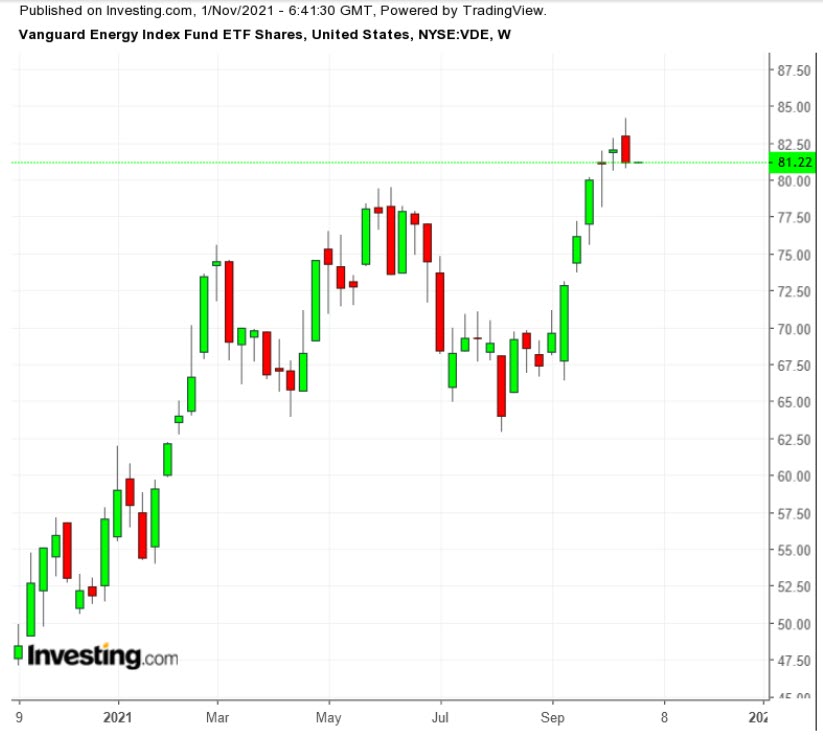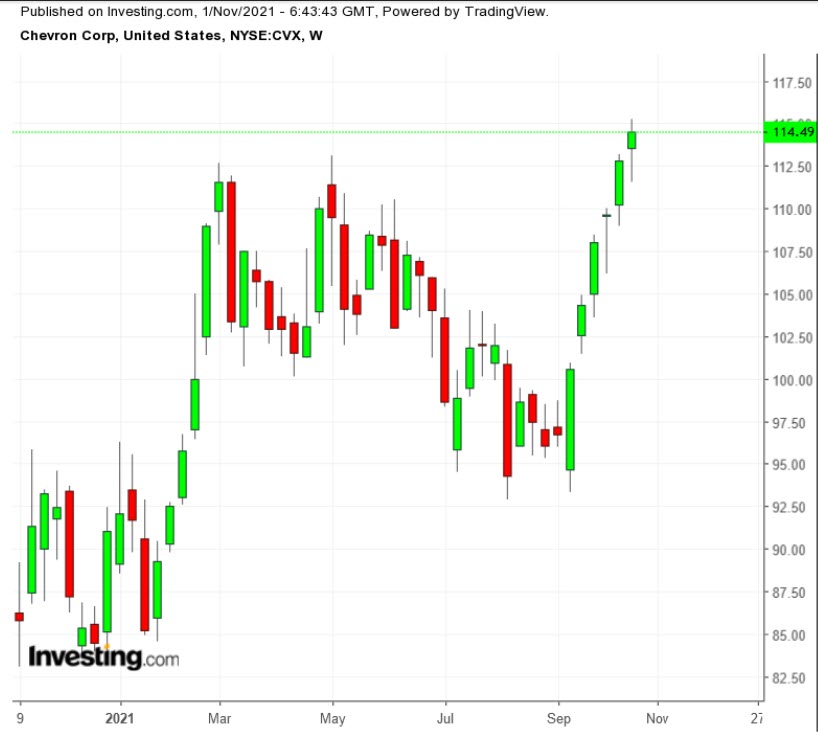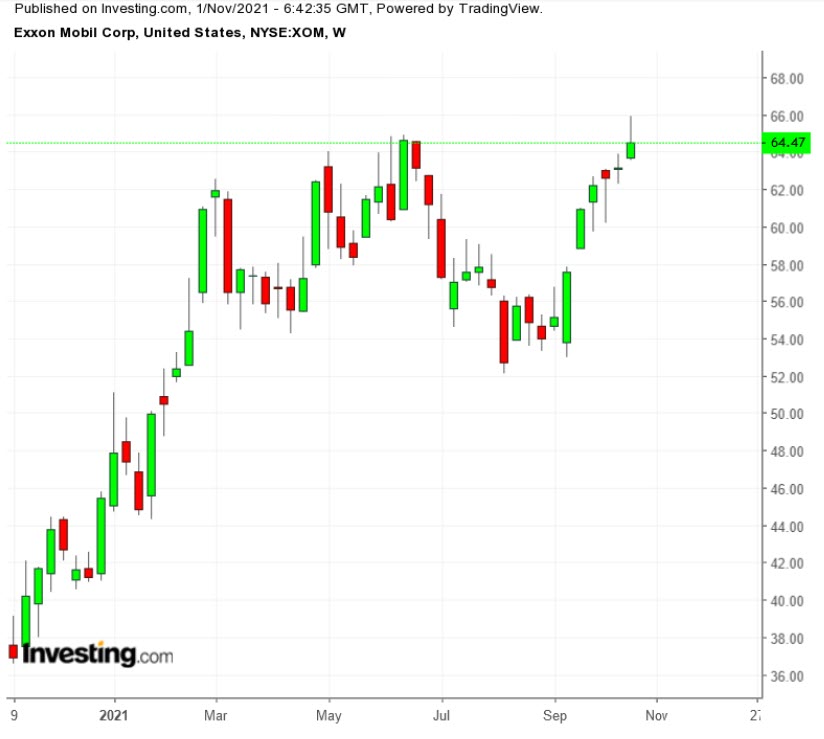The latest earnings reports from the world’s largest oil companies have sent quite an unusual signal to investors. Oil majors are not interested in spending more on capacity expansion to meet the surging energy demand after the COVID-19 shock. Instead, they plan to return more cash to shareholders who waited patiently to see a turnaround in their fortunes.
That message was made clear by the two largest US oil companies, Exxon Mobil (NYSE:XOM) and Chevron (NYSE:NYSE:CVX), as well as the European giant Royal Dutch Shell (NYSE:RDSa). Capital expenditures will rise next year the energy supermajors indicated, but the increases come off 2021’s exceptionally low base and within frameworks established before the recent surge in fossil-fuel prices.
That new direction is great news for investors who bet on the industry’s turnaround during the height of the pandemic when the sudden collapse in oil prices forced some of these producers to cut their dividends and halt their share buyback plans. During that period, they borrowed heavily to cover dividend payments.
US crude prices topped $80 a barrel this past month, for the first time since 2014—as demand comes back strongly from the COVID-19 driven slowdown. Global energy demand is rebounding faster than anticipated, and global oil production, while still rising, is struggling to catch up with the surge in consumption.
Oil Shares Are Surging
The Vanguard Energy Index Fund ETF (NYSE:VDE)—whose top 10 holdings include Exxon and Chevron—is up more than 55% for the year.

The fund is massively outperforming the S&P 500 which has gained 22% during the same period. This performance has been backed by appreciable gains.

On Friday, Chevron's Q3 2021 earnings release showed that it generated the largest free cash flow in its 142-year history during the third quarter. The San Ramon, California-based company told investors that it intends to keep capital spending 20% below pre-COVID levels next year while increasing share buybacks. Its 2022 capital budget will come in at the low-end of its $15 billion to $17 billion range, according to Chief Financial Officer Pierre Breber, some 60% below 2014 levels. On Friday's conference call with analysts he said:
“Over time the vast majority of the excess cash will return to shareholders in the form of higher dividends and the buyback.”
Shares closed at $114.49 at the close of the trading week. Chevron pays a quarterly dividend of $1.34 a share, providing an annual yield of about 4.74%.
Exxon raised its quarterly dividend on Wednesday by 1 cent, its first such increase since 2019.

During its third quarter earnings release on Friday, the Irving, Texas-based company reported it had generated $12 billion in cash from operations. XOM pays a quarterly dividend of $0.88 a share for an annual yield of 5.47%.
“Free cash flow more than covered the dividend and $4 billion of additional debt reduction,” according to Exxon CEO Darren Woods.
“With the progress made in restoring the strength of our balance sheet, this week we announced a dividend increase maintaining 39 consecutive years of annual dividend growth.”
Among the oil majors, Exxon is the favorite pick by analysts at Goldman Sachs, who see the stock’s dividend yield, which is the highest among the US majors, as “mispriced relative to the sustainable free cash flow.”
According to a recent note by Goldman:
“We believe the differentiated asset base, when combined with our constructive oil view, will drive positive earnings revisions.”
Exxon closed at $64.47 on Friday, lower than Goldman’s 12-month target of $68.
Bottom Line
Shares of big oil companies continue to remain attractive as energy demand rebounds strongly after the COVID plunge. The companies’ latest earnings show that investors in these stocks will be rewarded generously through dividend hikes and share buybacks.
